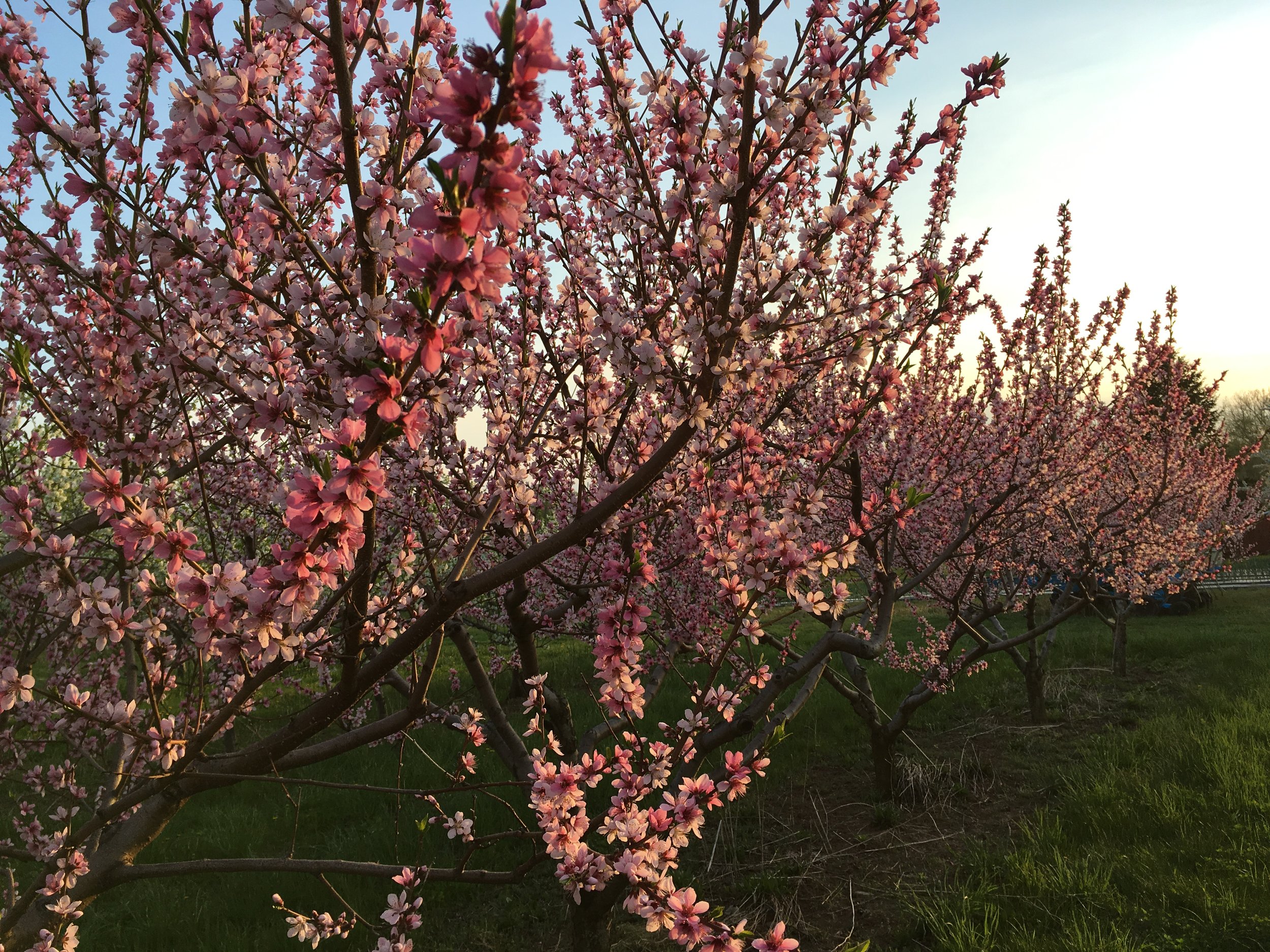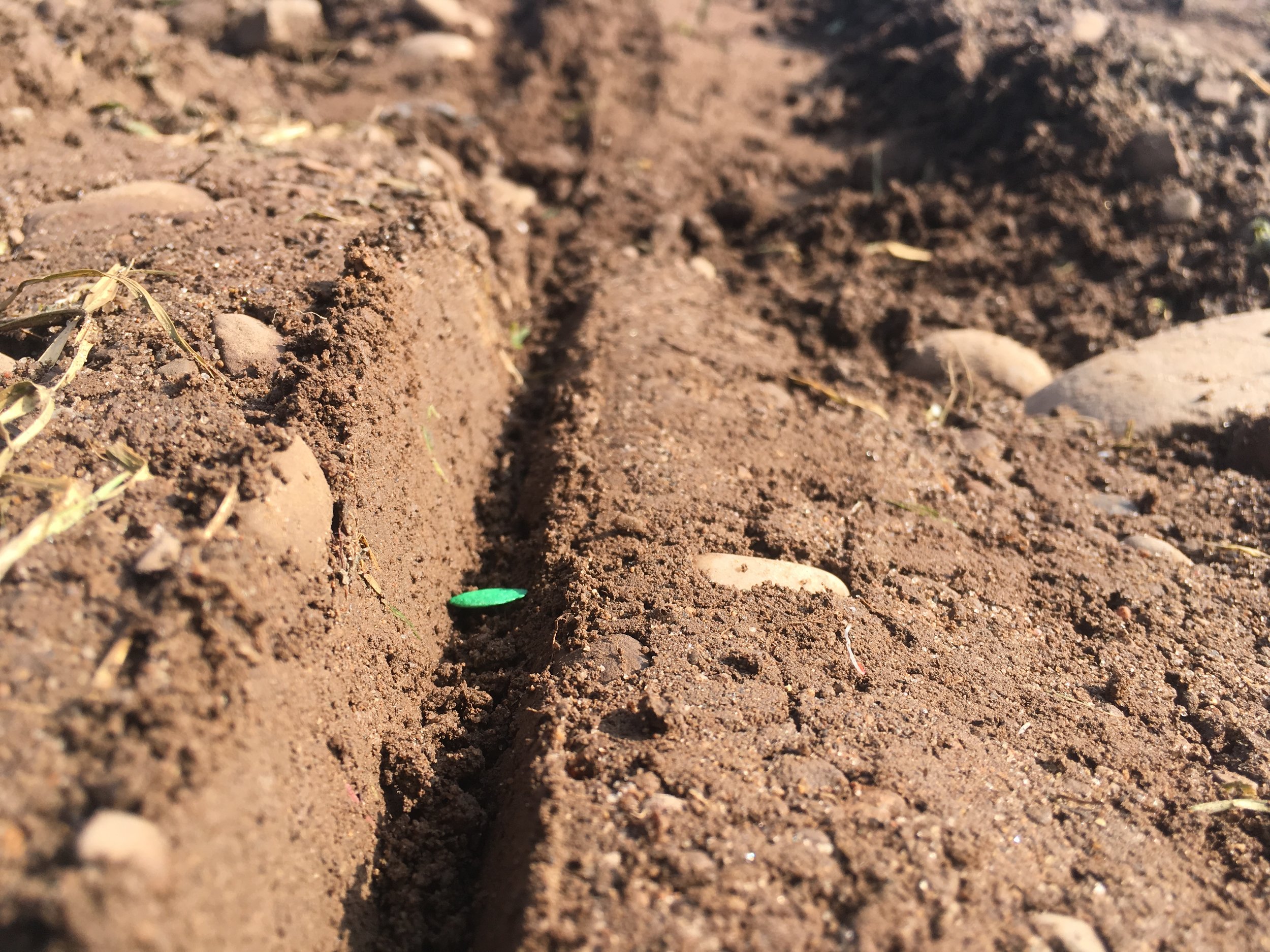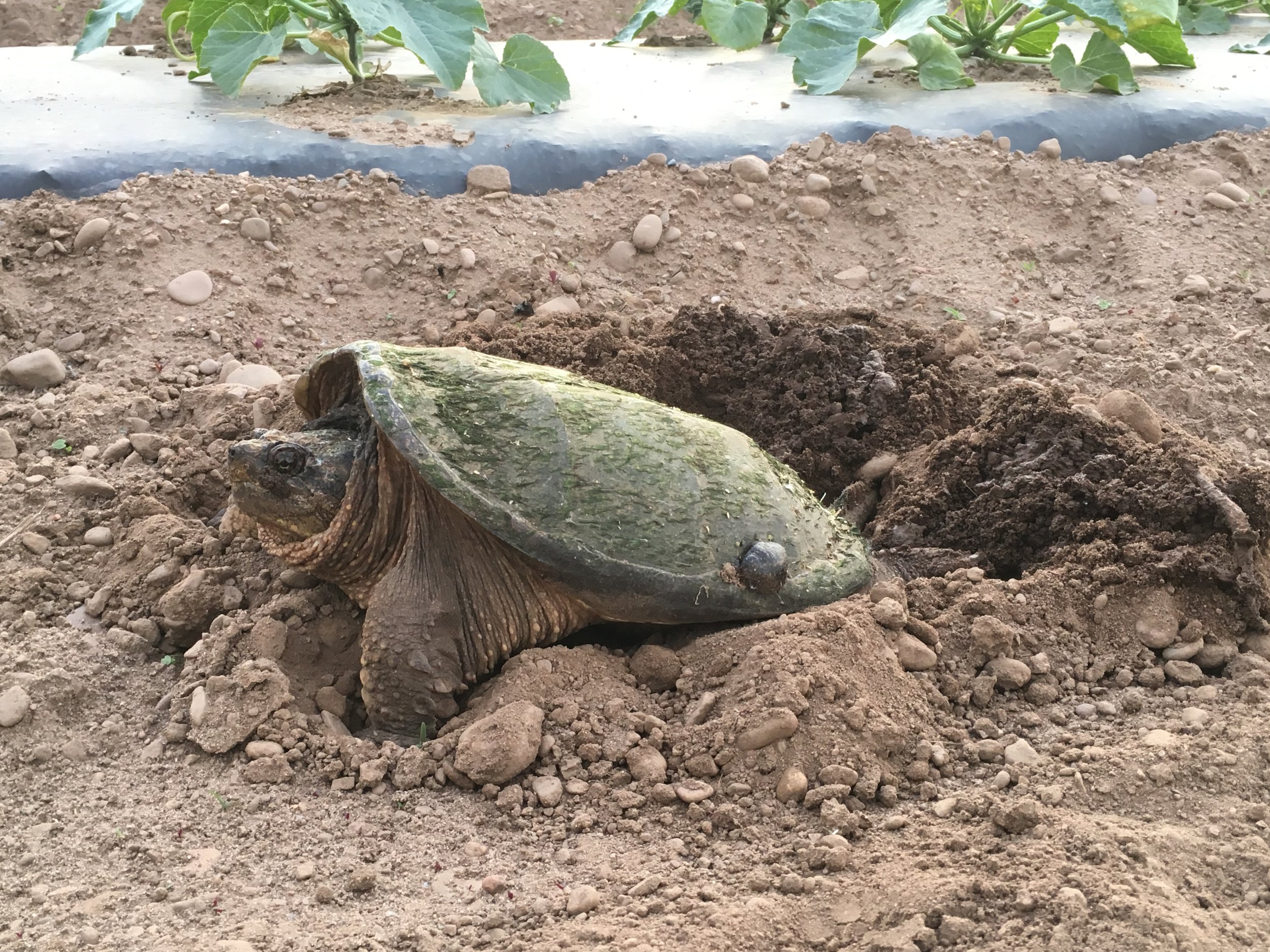Wow. These fruit blossoms have me blown away. Donut peaches, cherries, regular peaches, and plums are lighting up our farm. I took these pictures Wednesday night just before the sunset, which gives off such a unique color light. After walking through all the orchards, I would say the plums have the most fragrance; it’s so strong!
Some sweet cherries decorating the backyard of our market.
How to properly enjoy the orchard at the end of a long day of work.
Donut peaches! They are just as amazing to look at as they are to devour.
Speaking of flowers, our greenhouse is bursting at the seams with annuals. We’ve been working hard since the beginning of March to grow and sculpt our potted flowers and hanging baskets for you! Mother’s day is here, and we are ready. Shout out to all you wonderful moms out there. Including one of my favorites: Mother Earth. I’m very happy to say that we are recycling all of our plastic trays from the greenhouse this year! We have been collecting them all spring in the huge bags our potting soil came in. Then, at the end of the greenhouse season, we are going to take a big truck load to the recycling center. I am extremely excited to take this step in continuing our progress towards eliminating waste in our business.
Ben traversing a gutter as we change the one of the plastic roofs on our greenhouse
Greenhouses hold beautiful flowers yes, but ours has plastic roofs that need to be changed every few years which can be fun and a bit daunting to do. We take our time and walk carefully in the gutters high above the ground taking the old roof off, and putting the new one in place. In order to do a good job, we have to wait for perfect weather conditions to do this with. No rain, or wind.
Brand new rhubarb patch enjoying the spring heat.
In other spring news, we planted this rhubarb last year and it’s really taking off! All this growth is just from the past two weeks of warmth. Unfortunately we won’t be harvesting any from this patch this year, but hopefully next year it will be ready to share.
Friday Fruit Update
I thought it would take longer than a week for these buds to burst, but I was quite wrong. I think due to all the heat, they really took off. They peaked at full bloom on either Wednesday or Thursday, and then quickly went past peak into the next stage called petal fall (no idea where they got that name...), and lost a lot of petals to all the wind in the past few days. The apples are the exception in this case, in which some varieties, like this Gingergold bud pictured here are exiting the "pink" stage and opening up into full bloom. The blossom you see opened is called the king bloom, which is the same for strawberries, which they are closely related to. This king bloom is going to create the fruit we will harvest, and through the process of thinning (done mostly in June) we will eliminate the other four buds that haven't opened yet. Otherwise, the apples wouldn't get any bigger than a golf ball!
From left to right: Sweet cherries, peaches, prunes, and apples.















![IMG_20170918_201903[1].jpg](https://images.squarespace-cdn.com/content/v1/54244572e4b0b6739e3b8629/1505827002269-9H79EEWPDOKE3X6US9H7/IMG_20170918_201903%5B1%5D.jpg)
![IMG_20170918_172606[1].jpg](https://images.squarespace-cdn.com/content/v1/54244572e4b0b6739e3b8629/1505827135010-APAEKQM60USW4Z3FAJW3/IMG_20170918_172606%5B1%5D.jpg)
![IMG_20170918_202223[1].jpg](https://images.squarespace-cdn.com/content/v1/54244572e4b0b6739e3b8629/1505827042042-U6DHQ8UW7B7EPEMVW4KP/IMG_20170918_202223%5B1%5D.jpg)
































































